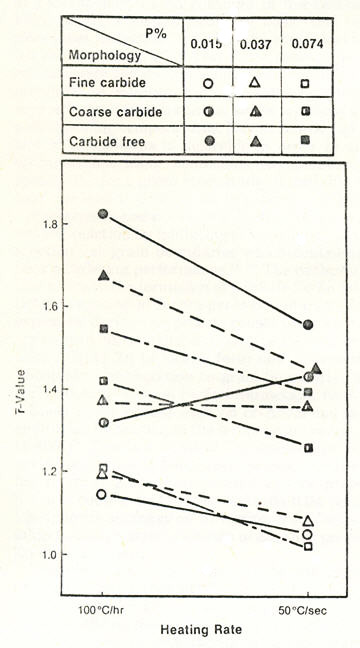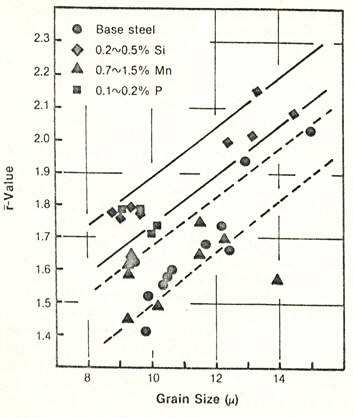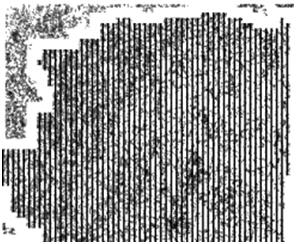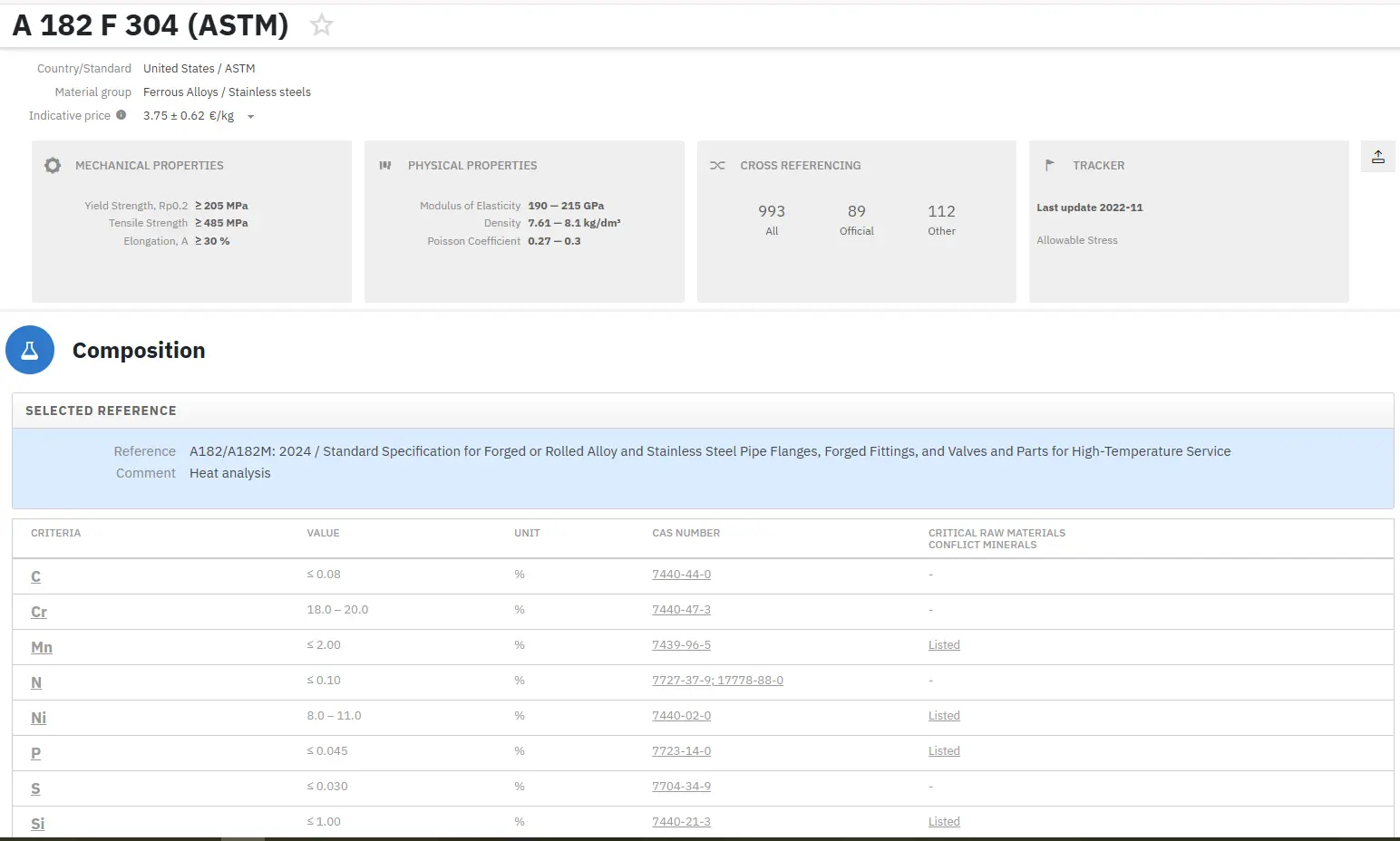Effect of Phosphorus on the Properties of Carbon Steels: Part Two
Abstract
This article examines the impact of phosphorus on the texture (R-value), spot weldability, magnetic properties, and coating behavior of carbon steels. Phosphorus enhances deep drawability and strength while influencing weld characteristics and reducing core loss in electrical applications. Proper management of phosphorus can significantly improve performance across various steel applications.
Texture (R-Value)
The anisotropy of plastic-flow properties is crucial for the deep drawability of sheet steels. A key measure of drawability is the R-value, defined as the ratio of width to thickness strain in a uniaxial tensile specimen at a fixed extension (typically 17 percent), with values around 2.0 considered excellent.
Plastic anisotropy is influenced by crystallographic texture, which relates closely to steel composition and processing. In body-centered cubic materials, such as carbon steels, favorable drawing textures consist of a high proportion of {1 1 1} planes aligned parallel to the sheet surface. The influence of phosphorus on texture and R-value is complex, as shown in early investigations that indicated up to 0.04% phosphorus can significantly improve the R-value in low-carbon rimmed steel during decarburizing open-coil annealing. Hu noted improvements in the R-value from approximately 1.5 to 2.0 with phosphorus content ranging from 0.004% to 0.12% in vacuum-melted rimmed steels subjected to simulated batch annealing.
In contrast, Al-killed steels that are air melted show less dramatic improvements in R-value, which appears to plateau around 0.08% phosphorus. Hu proposed that phosphorus segregation at grain boundaries influences the nucleation and growth of recrystallized grains, altering the recrystallized texture in Al-killed steel.
Recent studies, including those by Ono et al., highlight the significance of heating rates during annealing. For instance, low-phosphorus (0.016%) cold-rolled Al-killed steels exhibit a maximum R-value in relation to heating rate. At an optimal heating rate of approximately 50°C/hour, high-phosphorus steel showed a lower R-value than low-phosphorus steel, while the opposite occurred at heating rates exceeding 80°C/hour. These effects are attributed to the interaction between phosphorus and AlN precipitation.

Figure 1: Effect of the heating rate on the R-value as a function of the phosphorus content and carbide morphology in Al-killed steels. ALN precipitation was complete prior to cold rolling and annealing.
Further research by Hutchinson concluded that phosphorus is beneficial primarily when dissolved carbon would otherwise degrade texture. Phosphorus must segregate during slow heating to be effective. In Ti-stabilized ultra-low carbon steels, where minimal carbon exists in solution during annealing, small phosphorus additions tend to enhance the R-value. Figure 2 illustrates the R-value effect in relation to grain size for samples rapidly heated to 800°C, with P-bearing steel showing R-values up to 0.3 units greater than that of the base steel.

Figure 2: R-value as a function of grain size for rapidly annealed, Ti-stabilized, ultra-low carbon steels containing Si, Mn or P.
Overall, up to 0.1% phosphorus does not severely impair the drawability (R-value) of carbon steels. With proper processing parameters, drawability can be significantly improved by phosphorus additions, making it unique in increasing both strength and R-value.
Spot Weldability
Research by Sawhill and Baker compared the resistance spot-welding characteristics of plain-carbon steel with rephosphorized steel containing 0.04% to 0.12% phosphorus. They found that adequate weld button size, strength, and toughness were achieved across a practical range of welding conditions. Slight increases in electrode face diameter and welding times compared to plain-carbon steels are recommended. Other studies indicate excellent weldability in rephosphorized Al-killed steel and galvannealed Ti-stabilized ultra-low carbon steels, although phosphorus content should ideally not exceed 0.1%.
Magnetic Properties (Core Loss)
Phosphorus is added to cold-rolled motor-lamination steels, typically up to 0.15%, to minimize AC core loss. A significant portion of core loss arises from eddy currents, which depend inversely on electrical resistivity. Phosphorus enhances resistivity, reducing eddy currents, thus improving performance. The addition of phosphorus also enhances the punchability of motor laminations, further contributing to its utility.
Coating Behavior
Phosphorus significantly influences the alloying rate of galvannealed Fe-Zn coatings in low-carbon aluminum-killed steels. Phosphorus retards alloy layer formation, which can be beneficial if galvannealing temperatures are adjusted to maintain productivity. However, precise control of phosphorus levels is essential to optimize processing parameters.
Phosphorus inhibits the "outburst reaction" at grain boundaries, which contributes to poor powdering performance associated with brittle Fe-Zn intermetallic compounds. Additionally, steels with phosphorus content exceeding 0.04% can prevent embrittlement from Zn penetration during heating, as phosphorus segregation inhibits intergranular diffusion.

Figure 3: The effects of phosphorus on formation of Fe-Zn compounds outburst structure.
Phosphatability improves significantly with the addition of 0.07% phosphorus to niobium-bearing ultra-low carbon steel. Phosphorus also enhances corrosion resistance in phosphated steel and improves fishscaling resistance and after-fire strength in certain enameling steels. However, inconsistent phosphorus levels can lead to process control challenges during production.
Conclusion
In summary, phosphorus plays a critical role in influencing the texture, drawability, spot weldability, magnetic properties, and coating behaviors of carbon steels. Proper management of phosphorus levels can yield significant performance improvements across various applications, making it an essential element in steel manufacturing. Ongoing research, including the contributions from Hutchinson and Ono et al., will continue to clarify phosphorus's complex interactions in steel properties.
Find Instantly Precise Compositions of Materials!
Total Materia Horizon contains chemical compositions of hundreds of thousands materials and substances, as well as their mechanical and physical properties and much more.

Get a FREE test account at Total Materia Horizon and join a community of over 500,000 users from more than 120 countries.